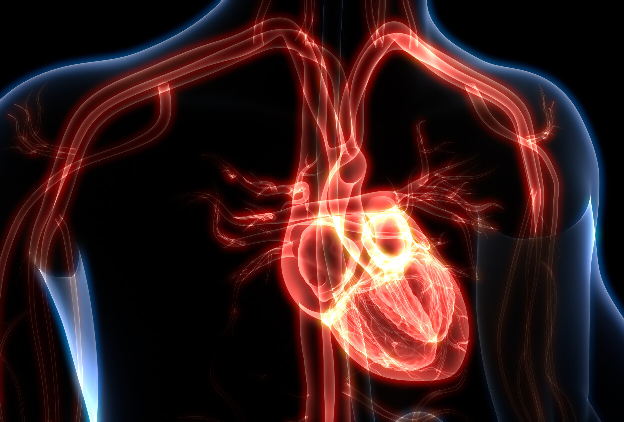
- No win. No fee.
- No hidden costs
- 100% risk-free, only pay if you win
- Home >
- Insights >
- Surgery Complications >
- What causes an aortic aneurysm?
It is impossible to overstate the importance of the network of blood vessels that carry blood to and from our hearts and throughout our bodies. The health of our veins and arteries is crucial to our overall wellbeing, and none play a bigger role than the aorta.
The aorta is the main artery from your heart. At approximately 2cm in diameter, the aorta runs down through the chest and into the abdomen where it splits into smaller vessels, and is responsible for carrying oxygen-rich blood away from the heart to all other parts of the body. Its role is indispensable, and therefore its health is paramount.
Unfortunately, its health can be affected by the development of an aortic aneurysm – a bulging of the lining of the aorta which, if allowed to grow significantly, can rupture and put someone’s life in serious jeopardy.
Here, we will cover what aortic aneurysms are, their causes, symptoms and treatments, and what negligent actions can result in aortic aneurysm claims.
Understanding aortic aneurysms
What is an aortic aneurysm?
An aortic aneurysm is a bulging of the aorta due to the walls of the vessel weakening. If left unchecked, this bulge can continue to widen, stretching the aorta until it tears.
There are two types of aortic aneurysm:
Abdominal aortic aneurysm
An abdominal aortic aneurysm (AAA) occurs in the part of the aorta which lies in the abdomen, below the kidneys, and is by far the more common type of aneurysm, accounting for approximately 75% of all cases and affecting 1.5% of men aged 65 or older.
Thoracic aortic aneurysm
A thoracic aortic aneurysm is one that occurs higher up in the chest. This type of aneurysm is much less common than an AAA, but it is equally dangerous if the bulging develops into a tear.
When any aortic aneurysm reaches 5.5cm or greater, it is considered at a high risk of rupturing – when the pressure causes the weakened, bulged wall to burst. A rupture is often sudden and leads to significant internal bleeding, which can prove fatal if not treated immediately.
Sadly, research by the British Heart Foundation (BHF) reveals that ruptures are fatal in 80% of cases and cause 5,000 deaths every year in the UK. Men are six times more likely than women to develop this condition, particularly those aged over 65 – it is responsible for 1 in 75 deaths of men in this age bracket.
What causes an aortic aneurysm?
As explained above, an aortic aneurysm develops when the walls of the aorta weaken and balloon outwards. There is not always a definitive reason why this happens, but there are a number of risk factors that make the condition more likely to occur:
Age and gender – while it is possible for young men and women to develop an aortic aneurysm, they most commonly develop in men aged 65 or over
A family history of aortic aneurysm
High blood pressure
Smoking
Diabetes
Chronic obstructive pulmonary disease
High cholesterol, which can lead to conditions such as atherosclerosis
Being born with a condition such as coarctation of the aorta, which narrows part of the aorta
Consequently, it is believed that the risks of some aortic aneurysms developing can be reduced by a healthy lifestyle.
What are the symptoms of an aortic aneurysm?
It is very likely that an aortic aneurysm will cause absolutely no symptoms to the affected individual, at least until it has reached a significant size. At that point, it is possible that the person will feel (in the case of an abdominal aortic aneurysm):
Lower back pain
Abdominal pain
A pulse to be present near the belly button
If an aneurysm is diagnosed prior to these symptoms developing then it is often purely serendipitous, such as when a healthcare professional is scanning the area for a completely separate purpose. That is why screening is routinely offered to men aged 65 or over, as they are the group most at risk of developing an aneurysm.
When an aortic aneurysm ruptures, the symptoms are pronounced and sudden, including:
Sudden severe abdominal or lower back pain
Dizziness
Sweaty, pale and clammy skin
A fast heartbeat
Shortness of breath
Fainting or losing consciousness
Treating an abdominal aortic aneurysm
When an abdominal aortic aneurysm is identified, it is placed in one of three categories based on the size of the bulge:
Small AAA (3cm-4.4cm)
Generally, no treatment is recommended at this point other than ultrasound scans every year to check the development of the aneurysm, and health advice is offered to minimise the risks of the aneurysm enlarging.
Medium AAA (4.5-5.4cm)
Again, no treatment is usually offered here beyond what is stated above, but the time between ultrasound scans is shortened to three months.
Large AAA (5.5cm+)
When the aneurysm exceeds this threshold, surgery is recommended to stop it from getting any larger, as that is when a tear is likely to occur.
For small and medium-sized aneurysms, a ‘wait-and-see’ approach is adopted as surgery to place a graft over the bulge carries a risk of complications. As a result, the aneurysm will be monitored periodically in accordance with its size, as well as advice such as:
Stop smoking
Eat more healthily
Exercise regularly
Maintain a healthy weight
Reduce alcohol consumption
Once the bulge reaches or surpasses the 5.5cm threshold, the risk of a rupture outweighs the risk of surgery. When this happens, there are two main types of surgery to correct a AAA:
1. Endovascular surgery
Here, the graft created for the bulge in the aorta is inserted into a blood vessel in the groin through small cuts in the skin, where it is then carefully guided through the bloodstream into position in the aorta. This approach is generally less likely to cause complications, and the hospital stay and recovery times are lower. However, there is the risk of later treatment being necessary if the graft slips out of place.
2. Open surgery
The abdomen is opened surgically and the surgeon directly replaces the aneurysm with the graft. This approach carries more risk than endovascular surgery, and will typically require a longer recovery period. However, with open surgery there is less chance of the graft slipping out of place, meaning there is no need to undergo regular scans checking its status.
When a rupture occurs, treatment will be one of the two above surgeries, decided by the surgeon responsible. Sadly, if the rupture occurs outside of the hospital, the chances of survival are slim.
Aortic aneurysms and clinical negligence
When we consider aortic aneurysm claims, there are numerous circumstances where the actions or inactions of a healthcare professional, be it the person responsible for monitoring the progress of the aneurysm, or the surgeon tasked with placing the graft, can be considered negligent.
Claims often made against professionals and organisations for aortic aneurysm negligence may be the result of:
- Failure or delay in arranging screening for someone considered at risk
- Failure to inform a patient that an AAA has been identified during a scan for a different issue
- Something being missed during surveillance, such as the incorrect measurement of the aneurysm
- Failure to properly inform the patient of the risks and benefits of either continuing to monitor the aneurysm or performing surgery
- Failure to diagnose AAA in patients attending A&E, particularly following a rupture
- Delays in treating the patient following a rupture
- Delay in offering surgery once an aneurysm is noted to be 5.5cm or wider
- Avoidable surgical complications
Each of these scenarios can drastically alter the patient’s prospects for recovery and survival, especially when you consider how dangerous an aortic aneurysm can be.
Although performing all appropriate actions and making all the right decisions is no guarantee that someone will survive a rupture, any negligent mistake can have fatal consequences – and the affected individual’s loved ones may seek answers, compensation, and justice.
Making an aortic aneurysm claim
We hope that this article has helped you understand aortic aneurysms more and where medical negligence can contribute to whether a patient’s condition is successfully monitored and handled appropriately, or they only receive treatment when it is already too late.
We understand how devastating it can be to be let down by someone you trust. Particularly in the case of a preventable aortic aneurysm rupture, the consequences of this can be incredibly serious, including death.
Whether this has happened to you or someone you care about, Gadsby Wicks has decades of experience managing aortic aneurysm claims. Through our comprehensive investigations and links to trusted medical experts, we will build an understanding of what happened to you, and guide your claim towards achieving the best possible outcome.
Speak to the true specialists in medical negligence – get in touch with our team today.
Disclaimer
All content contained within this article is meant for general information only – this should not be treated as a substitute for medical advice from your doctor or another healthcare provider. If you require legal advice specific to your situation, please contact our team directly.
Gadsby Wicks is not liable for any diagnosis made from the content of this article, nor does it endorse any service or external site linked to within the article.
Always consult your GP if you are concerned about your health and wellbeing, or speak to us if you require legal advice.




 Back to top
Back to top
